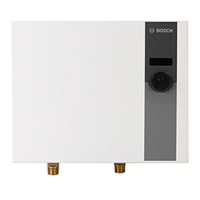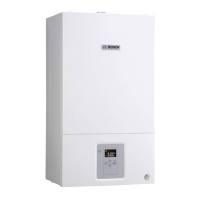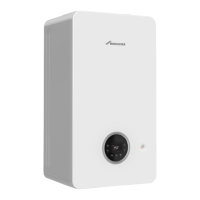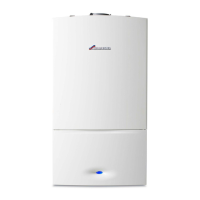24 | Environment / disposal
Gaz 6000 W8 716 473 216 (2014/09)
12 Environment / disposal
Environmental protection is a fundamental corporate strategy of the
Bosch Group.
The quality of our products, their efficiency and environmental safety
are all of equal importance to us and all environmental protection
legislation and regulations are strictly observed.
We use the best possible technology and materials for protecting the
environment taking into account of economic considerations.
Packaging
We participate in the recycling programmes of the countries in which our
products are sold to ensure optimum recycling.
All of our packaging materials are environmentally friendly and can be
recycled.
Used appliances
Used appliances contain valuable materials that should be recycled.
The various assemblies can be easily dismantled and synthetic materials
are marked accordingly. Assemblies can therefore be sorted by
composition and passed on for recycling or disposal.
13 Inspection/Maintenance
To ensure that gas consumption and environmental impact remain as
low as possible over an extended period of time, we recommend that you
take out an inspection/maintenance contract with an authorised
contractor covering an annual inspection, and maintenance at other
times as required.
Important notes
• The following test equipment is required:
– Electronic flue gas emission meter for CO
2
, CO and exhaust
temperature
– Pressure gauge for 0 - 30 mbar (resolution at least 0.1 mbar)
• Special tools are not required
• Permissible lucricants:
– For components in contact with water: Unisilkon L 641
(8 709 918 413).
– Unions: HFt 1 v 5 (8 709 918 010).
▶ Use 8 719 918 658 as heat conducting paste.
▶ Only use genuine spare parts!
▶ Refer to the spare parts catalogue when ordering spare parts.
▶ Always renew seals and O-rings removed during servicing or repair
work.
After inspection/maintenance
▶ Retighten all loosened threaded fittings.
▶ Recommission the appliance ( page 15).
▶ Check all connections for leaks.
13.1 Description of various maintenance operations
13.1.1 Calling up the last fault saved
▶ Select service function 1.6.A ( page 19).
13.1.2 Opening the appliance
Taking down flue pipe
1. Take down the sealing.
2. Take the short flue pipe.
Fig. 27
DANGER: Risk of explosion!
▶ Turn off gas valve before working on gas-carrying
components.
▶ Check for leaks before working on gas-carrying
components.
DANGER: Risk of poisoning
▶ Check for leaks before working on gas-carrying
components.
DANGER: Risk of electric shock
▶ Before carrying out work on electrical components,
disconnect the power supply (240 V AC) (fuse, circuit
breaker) and secure against unintentional
reconnection.
WARNING: Risk of scalding
Hot water can lead to severe scalding.
▶ Close all valves and possibly drain appliance prior to
working on parts carrying water.
NOTICE: Escaping water can damage the
electronics.
▶ Cover the electronics prior to working on
parts carrying water.
For an overview of faults, see page 29.
For an overview of faults, see page 29.
2.

